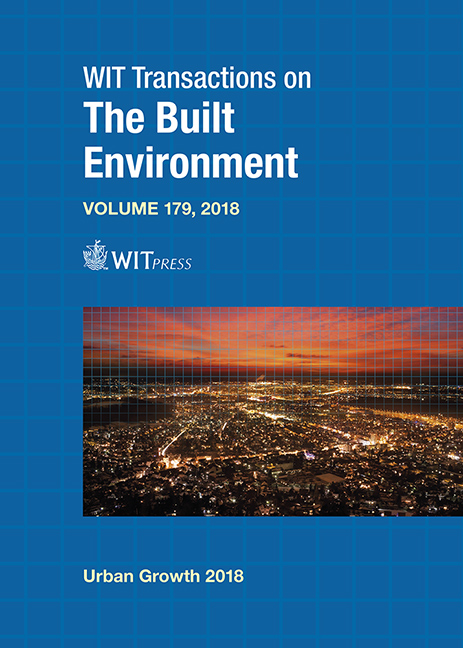APPROACH TO URBAN METABOLISM OF ALMASSORA MUNICIPALITY, SPAIN, AS A TOOL FOR CREATING A SUSTAINABLE CITY
Price
Free (open access)
Transaction
Volume
179
Pages
11
Page Range
209 - 219
Published
2018
Size
922 kb
Paper DOI
10.2495/UG180201
Copyright
WIT Press
Author(s)
IRENE LÓPEZ CHOFRE, ERIC GIELEN, JOSÉ S. PALENCIA JIMÉNEZ
Abstract
Achieving sustainable growth is a priority in the Europe 2020 Strategy. For this purpose, the 20-20-20 objective was adopted: reduce greenhouse gas emissions 20%, increase the percentage of renewable energy sources by 20% and improve energy efficiency 20%. In order to achieve this, the focus must be placed on cities. That is why the Community Funds Regulations establish the obligation to dedicate at least 5% of European Regional Development Fund resources toward measures for integrated and sustainable urban development. The Operational Program of Sustainable Growth 2014–2020, intends to support cities’ initiatives for changes towards an economy with low carbon emissions, to increase the use of renewable energy sources, to modernize our transport sector and to promote energy efficiency. A metabolic approach to the urban phenomenon tries to understand the city as a complex system that incorporates and transforms materials, water and energy, to ensure the different functions performed by the city, whether social, environmental or economic. The knowledge of a city’s urban metabolism provides a powerful tool for analysis, planning and management, moving towards the goal of sustainability. Our research aims to model the city’s urban metabolism in Almassora (Valencian community, Spain) and to demonstrate its usefulness as a methodological proposal for integrating this framework into the process of developing a strategy towards a sustainable city. The current metabolic profile of the city was generated calculating CO2 emissions and energy consumption for different urban forms of the city. This model gives us a tool to better understand city functioning in terms of urban metabolism, from the transformation of resources (input) and the efficiency of the different urban functions of the city, until waste generation (output). This paper offers a first reflection about how an urban metabolism approach can be useful as a planning tool to design strategies to reach sustainability.
Keywords
urban metabolism, sustainable city, planning tool, circular economy, Almassora, Spain





